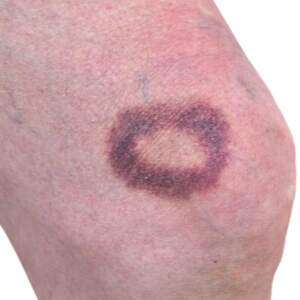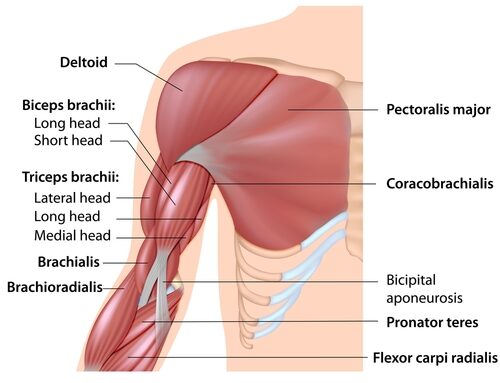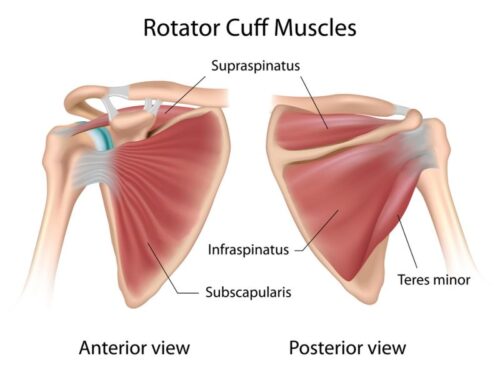Have you ever heard of a hematoma? It sounds like something that could be pretty serious, and it can be. It is a collection of blood outside of the vessels that can occur in many places in the body. But what exactly causes them and how can they be treated? In this article, we’ll explore what a hematoma is and how to treat them.
a collection of blood outside of the vessels that can occur in many places in the body. But what exactly causes them and how can they be treated? In this article, we’ll explore what a hematoma is and how to treat them.
The first thing to understand is that they are not just limited to one area of the body. They can occur anywhere, from beneath the skin to within organs such as the brain. Most commonly, however, they form beneath the skin when blood vessels are damaged by either an injury or surgery. This causes blood to collect between tissues or organs, creating a swollen mass called a hematoma.
The symptoms vary depending on its location and severity. In some cases, there may be no pain or discomfort at all; in others, there may be swelling and tenderness around the affected area. In more severe cases, internal bleeding may occur if the hematoma presses against vital organs such as the heart or lungs. Fortunately, most can be treated with simple measures such as applying ice packs or taking medications to reduce inflammation and swelling. Depending on their location and size, some may require more invasive treatments such as surgery or drainage procedures.
In this article, we’ll dive deeper into understanding what a hematoma is and how it’s treated so that you can regain control over your health and well-being.
What Is A Hematoma
The human body is a complex organism, and even the most simple of injuries can cause serious damage. A hematoma is a condition in which blood leaks from damaged superficial capillaries and pools in hollow areas. Blood can also accumulate between the muscles as a result of trauma.
What are the types of hematomas?
Hematomas may form anywhere in the body. Here are the different types:
Subdural hematoma: occurs between the brain tissue and the inside lining of the brain
Spinal epidural hematoma: ocuurs between spinal vertebrae and the outside lining of the spinal cord
Intracranial epidural hematoma: is between the skull and the outside lining of the brain
Subungual hematomas: occurs under the fingernail or toenail
Nasal septal hematoma: occurs under the nasal septum
Intra-abdominal, peritoneal, or retroperitoneal hematoma: occurs inside the abdominal cavity

Subcutaneous hematoma: blood accumulates in the fatty tissue
Ear or aural hematoma: between the ear cartilage and overlying skin
Splenic hematoma: occurs within the spleen
Hepatic hematoma: occurs within the liver
Signs And Symptoms of a Hematoma
A hematoma is a localized collection of blood outside of a damaged blood vessel. It can be caused by trauma or from a bleeding disorder. This can lead to swelling and pain around the affected area. Knowing the signs and symptoms can help you seek medical treatment quickly if it occurs.
Most hematomas form in soft tissue, such as muscles, tendons, skin, and fat deposits. Common symptoms include an area of swelling that is tender to the touch, discoloration or redness of the surrounding tissue, and pain or discomfort in the area. If active bleeding is present, you may notice continuous oozing or seeping of blood.
Those with bleeding disorders and those who take blood thinners like warfarin want to be especially mindful of any complications of a hematoma.
Usually, hematomas resolve on their own and do well with the standard rest ice compression. However, seek immediate medical attention if you experience a severe injury, especially any head injuries.
Cause Of A Hematoma
In the modern age, treatment, and management of hematomas have become increasingly common and effective. To understand how to treat a hematoma best, we must first explore its cause.
In general, hematomas are usually caused by blunt force trauma or other traumatic injury. They can occur with a broken nose or other head injuries. Acute subdural hematomas specifically are especially dangerous because of where the blood clot forms. These blood clots in the brain tissue are the most lethal and most times result in traumatic brain injury. They require immediate surgical treatment to remove the blood clot and repair the blood vessels.
How Is It Recognized
Recognizing a hematoma involves looking for signs of swelling and discoloration around the affected area. If there is significant pain, then this may also be an indication that a hematoma is present.
In most cases, the diagnosis of a hematoma can be made with relative ease based on the physical signs and symptoms. For minor injuries, blood clotting agents may be applied to help reduce swelling and prevent further bleeding. If necessary, medical care such as surgical drainage may be required for large hematomas that cause significant pain or interfere with normal activities. Additionally, pain medications may be prescribed to help reduce discomfort associated with larger collections of blood near the skin surface.
Treatment
 The treatment of a hematoma depends on its location and severity. Superficial hematomas, such as those that can occur after minor trauma, are most often treated by removing the excess blood and applying pressure to the affected area. In cases of hepatic hematoma, which is caused by orthopedic injuries or major trauma, surgery may be required in order to remove the clot and stop any ongoing bleeding. An epidural hematoma is a type of intracranial hematoma that occurs outside of the brain, and it requires immediate medical attention to prevent further injury or death. In cases of an ear hematoma, draining the fluid may be necessary in order to reduce pain and swelling.
The treatment of a hematoma depends on its location and severity. Superficial hematomas, such as those that can occur after minor trauma, are most often treated by removing the excess blood and applying pressure to the affected area. In cases of hepatic hematoma, which is caused by orthopedic injuries or major trauma, surgery may be required in order to remove the clot and stop any ongoing bleeding. An epidural hematoma is a type of intracranial hematoma that occurs outside of the brain, and it requires immediate medical attention to prevent further injury or death. In cases of an ear hematoma, draining the fluid may be necessary in order to reduce pain and swelling.
If not treated properly, they can become a more serious problem. When the bleeding occurs on the front lower leg it can cause acute compartment syndrome which can cause nerve damage. An untreated hematoma can also cause myositis ossificans which is when the blood calcifies into a mass that looks like a bone chip embedded into soft tissue.
No matter the cause or location of a hematoma, it’s important to seek medical attention right away if one suspects they have sustained an injury. This will allow for early diagnosis and prompt treatment in order to avoid long-term complications or even death.
What’s The Difference Between A Hematoma And A Bruise
A hematoma is a collection of clotted blood outside of the body’s blood vessels. It occurs when a blood vessel becomes damaged and the blood escapes and pools beneath the skin. Hematomas are usually caused by trauma, but they may also occur due to medical conditions such as clotting disorders or infections. A bruise, on the other hand, is a collection of broken blood vessels within the skin that results in discoloration. It is usually caused by blunt force impact or pressure.
They can range in size from very small to very large. They can be found anywhere on the body, but ear hematomas are particularly common in pets and humans. Most intracranial hematomas require immediate medical care, while smaller ones can be managed at home with cold compresses and elevation. If you notice any signs of infection, such as fever or inflammation around the affected area, seek medical care immediately. Bruises should be treated similarly to hematomas with cold compresses and elevation to help reduce swelling and pain. In either case, if you have any concerns about your health, it’s important to consult a doctor for advice.
Should Someone With a Hematoma Get a Massage?
When an injury is fresh, massage is contraindicated to the area. After about 2 days, the blood vessel wall has typically sealed off. Gentle massage around the edges of the lesion will help speed up the recovery of the hematoma. Lymphatic drainage massage is especially helpful for healing this type of injury.
sealed off. Gentle massage around the edges of the lesion will help speed up the recovery of the hematoma. Lymphatic drainage massage is especially helpful for healing this type of injury.
If you have a massage scheduled and have been recently injured, just let the massage therapist know so they can avoid the area. Schedule your appointment now!
Conclusion
In conclusion, a hematoma is a localized collection of blood outside the blood vessels. It can occur in any part of the body and can be caused by minor or severe traumas, surgery, or other medical conditions. Symptoms may include swelling, pain, and discoloration. Treatment depends on the size and location of the hematoma but may involve draining the blood, medications like ibuprofen to reduce inflammation and pain, or even surgery in some cases.
The main difference between a hematoma and a bruise is that it is deeper under the skin than a bruise since it involves broken blood vessels. Therefore, a hematoma may require medical attention, while bruises can generally heal on their own with time.
Hematomas can be serious if left untreated and should always be evaluated by a doctor to decide on the best treatment option for each case. But how do you know when to seek medical attention for your symptoms? That’s something only your healthcare professional can tell you!







